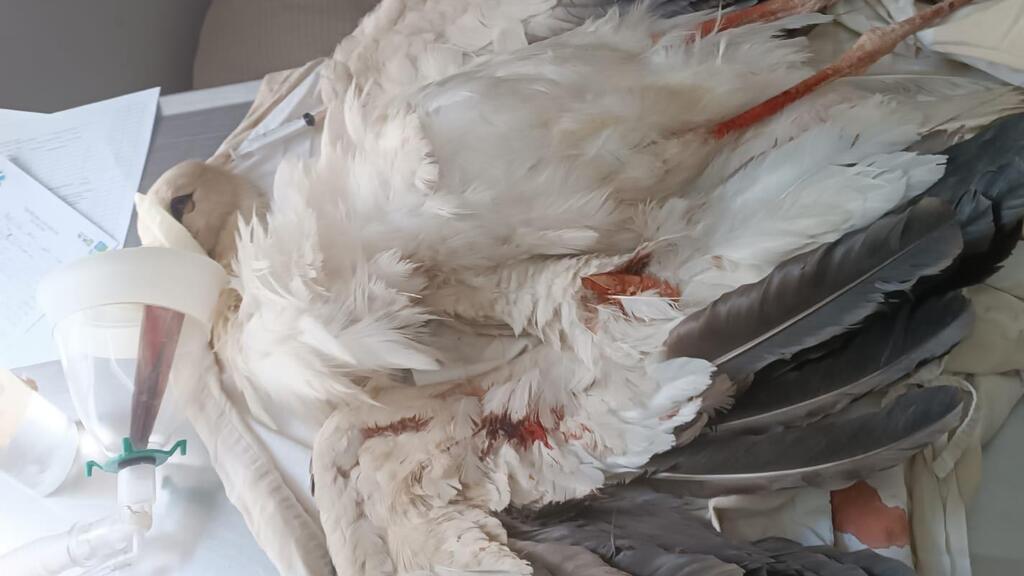In recent weeks, dozens of white storks have been fatally injured in northern Israel after colliding with overhead power lines. Most of the incidents occurred in the Golan Heights, particularly along the Oil Road and in the Valley of Tears, where new turbine farms and power lines have recently been installed.
Since the beginning of the spring migration season, dozens of reports have been received by the Hibolans wildlife rescue hotline about storks found collapsed on the ground—some dead, others severely wounded. The injured birds were transferred to KKL’s wildlife acclimation center, where they were found to be suffering from open fractures, internal bleeding, and overall poor physical condition. In several cases, veterinarians were forced to euthanize the birds due to the severity of their injuries.
“Collisions between birds and overhead power lines are an alarming phenomenon, causing major damage to Israel’s ecosystem each year,” said Yaron Charka, chief ornithologist at KKL. “In this particular event, we received field reports of over 30 stork carcasses, with dozens more suffering serious fractures to their wings and legs. It’s a devastating situation.”
Charka noted that along the western canal in the Hula Lake Reserve, KKL recently completed a project to bury overhead power lines that posed a threat to birds. However, he emphasized that solving the issue on a national scale would require the involvement of additional stakeholders.
Rona Valensi, a veterinarian at the wildlife acclimation center, said that each stork rescue involves a complex logistical effort—and that sometimes days pass between the time of injury and discovery, reducing the chances of survival. “There’s an urgent need to find ways to reduce these injuries, including marking power lines and proactively preparing for migration along known routes,” she said.
Get the Ynetnews app on your smartphone: Google Play: https://bit.ly/4eJ37pE | Apple App Store: https://bit.ly/3ZL7iNv
Electrocution and collisions with power infrastructure remain a serious threat to bird populations in Israel, especially for rare and endangered species. Power poles often serve as resting and lookout points for birds, but contact with live wires results in the deaths of thousands of birds each year. While insulating poles can partially address the problem, the implementation rate has been slow and insufficient, according to environmental experts.
Dan Alon, CEO of the Society for the Protection of Nature in Israel, also weighed in: “Bird collisions with power lines are not an inevitable fate. This phenomenon can and should be reduced or even prevented through measures like burying lines or installing deterrents. As Israel continues expanding its electric grid, we must avoid placing overhead lines in ecologically sensitive areas and proactively install mitigation systems.”
Alon stressed that new energy generation sites must be carefully evaluated—especially in terms of their location and how they connect to the national grid—to ensure better planning that takes into account both environmental sensitivity and bird flight patterns.




